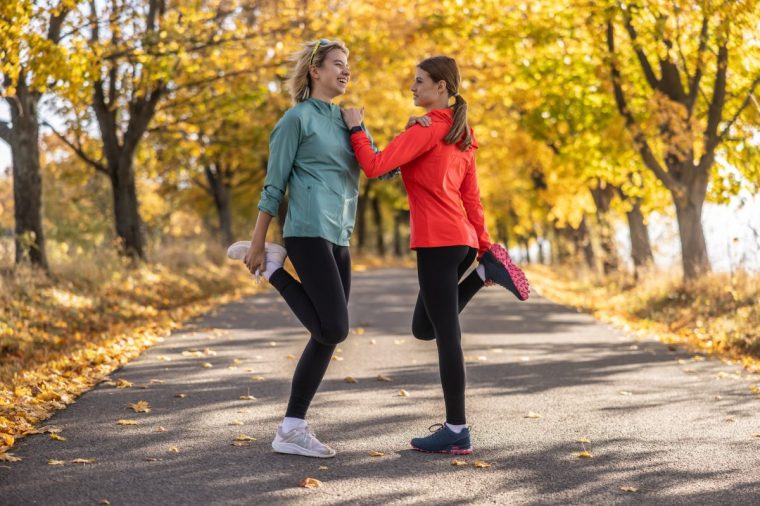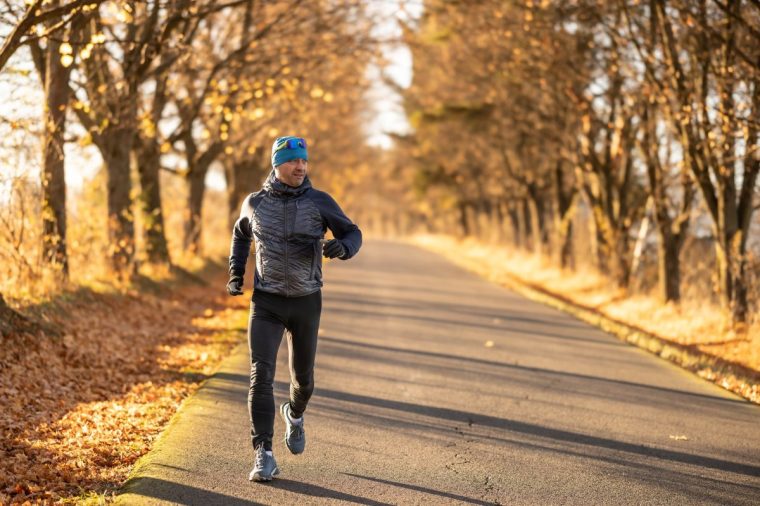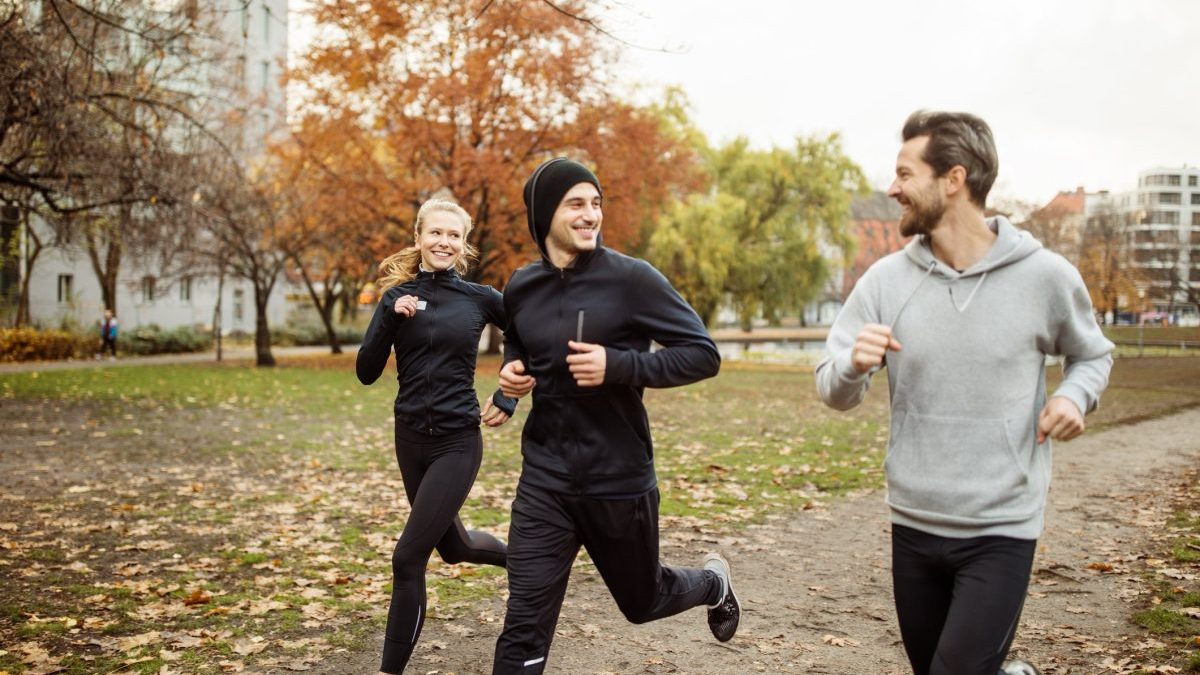Lacking in motivation to move? Fitness experts share the cold weather habits they swear by
A lot changes when winter arrives, from how we socialise to how we eat. But perhaps the biggest shift of all is how we exercise. Dark mornings can make getting out of bed for even your most beloved Pilates class feel impossible, and cold weather can make outdoor movement unappealing.
Activity levels have been found to drop by about 18 minutes per day of light exercise and 15 minutes per day of moderate-to-vigorous activity in winter compared with summer, according to a Dutch study, which is explained by changes in temperature and sunlight hours.
New FeatureIn ShortQuick Stories. Same trusted journalism.
While it might feel like the season for hibernating, avoiding exercise means losing out on the benefits your body needs at this time of year – not least improved immunity to help ward off colds and an endorphin boost that protects against mood slumps.
So how do you build a workout routine that you will stick to?
Maintain balance
When winter comes, it is likely that cardiovascular exercise – such as walking or running, which are typically performed outside – will be the first thing to go. This is something to stay aware of, says Monty Simmons, a personal trainer who advises that we should maintain a decent mix of resistance and cardio work.
The NHS suggests that the year-round goal should be at least two resistance workouts and 150 minutes of moderate intensity activity per week, while research shows that about 7,000 steps is a good place to start to reap the health benefits.
That might mean walking to the station in the morning to make up for a lack of evenings outside, or adding some extra treadmill time into your workout routine if you are losing out on steps during the day.
Eleanor Heaton-Armstrong, a personal trainer and nutritionist, says: “The extra time we will all spend inside during winter is the perfect excuse to add some stretching and mobility to your routine. My clients must be beyond bored of me telling them to stretch more but mobility is one of the cornerstones of fitness.”
Cosy nights in front of the television can be spent unwinding your hips in pigeon pose, or opening your chest with clasped hands – both areas that are in need of unfurling after a day at a desk.
Use your lunch break
 Try and utilise your lunch break (Photo: SimpleImages/Moment RF/Getty)
Try and utilise your lunch break (Photo: SimpleImages/Moment RF/Getty)
A 2021 study which analysed data from more than 400,000 participants found that each extra hour spent outdoors in daylight was associated with a reduced likelihood of depression, low mood, neuroticism, tiredness and insomnia, as well as more happiness and easier morning wake-ups.
“I cannot stress enough the importance of exposing yourself to as much daylight as you can during winter,” recommends Heaton-Armstrong. “The effect it will have on your circadian rhythm, energy levels and sleep quality is so valuable to winter health.”
But in winter, we have much less chance of utilising the sun. “If you’re someone who tends to skip their lunch break, now is the time to stop,” says Simmons, who suggests using it as a time to go on a brisk walk with a colleague or jog around the park.
If it is cold, you might not even break a sweat, meaning that you can head straight back to your desk.
Connect with community
Simmons says that it is common to suffer a dip in motivation and mood when the seasons change. “Seasonal affective disorder is a real thing,” she explains. “It happens when we see less daylight, when the weather turns colder and greyer, and that can affect our mood and make it harder to want to work out.
“Lean on others for support, whether that’s friends, a group workout or even an online trainer.”
Research suggests that we are more likely to commit to exercise if someone else is relying on us to show up, so making plans with friends is a good way to stay active.
But it is also important from a safety point of view – a survey last year found that 72 per cent of women changed their fitness routines in winter because they were worried about potential harassment or abuse in the dark.
Heaton-Armstrong says: “It can be frustrating feeling nervous to leave your house, but no workout is more important than your safety.
“Plan ahead to safeguard your session; meet somewhere well-lit, avoid quiet areas and always let someone know where you’re going and when you’ll be home.
“When I run with friends at night, we also bring a portable speaker to temper any nerves – it feels like a party, no matter how dark it is.”
Dress wisely
 Wear the correct clothing (Photo: SimpleImages/Moment RF/Getty)
Wear the correct clothing (Photo: SimpleImages/Moment RF/Getty)
Simmons adheres to the Scandinavian proverb “there is no such thing as bad weather, only bad clothing”. She says: “When it is really cold, wear leggings or tight shorts under trousers, tuck your trousers into your socks, tuck your shirt into your trousers, and then layer up with a jumper and waterproofs.
“And make sure that they are proper waterproofs, not just water-resistant, because dark and cold is one thing, but dark, cold, and wet is what really kills motivation.”
Fuel well
Training on an empty stomach is a recipe for low motivation at the best of times – let alone when your desire to get outside is already waning. “A snack before a workout can help with performance and body temperature regulation, so consider eating a piece of fruit or a slice of toast beforehand to get the most out of your session,” says Heaton-Armstrong.
She also emphasises hydration, which is just as important as during summer training. If you are training indoors, there is probably no difference in how much you will be sweating in different seasons.
And even if you’re shivering rather than dripping, drinking enough water helps with immune function, joint health and temperature control, which can all feel diminished during winter.
Start now
Both Heaton-Armstrong and Simmons say the best time to start a winter routine is before the cold and darkness arrive in earnest.
“Start building the habit in autumn so your body gradually gets used to the drop in temperature,” advises Simmons.
Your mind might also need time to adjust to a new fitness programme, which is easier when the outdoor temperature isn’t 20°C colder than your bed. But remember – your routine doesn’t need to be perfect.
“The most important thing is just to do something,” adds Simmons. “Even if it’s not the full workout you planned, little and often is better than nothing at all.”
Your next read

